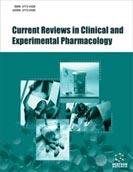Abstract
Rationale & Objective: Rodenticide poisoning, either accidental or intentional, is very common in rural India. The absence of a definite antidote made it a major concern with a high mortality rate. Therefore, this study aimed to assess the effectiveness of N-Acetyl Cysteine (NAC) in rodenticide poisoning as there are recent positive shreds of evidence on it.
Methodology: A retrospective study was conducted in a tertiary care teaching hospital on patients admitted with rodenticide poisoning during a period of 2012-2017. The Fischer’s exact test and relative risk were measured to analyze the outcome of treatment and risk factors, respectively.
Results: A total of 229 patients were enrolled in the study with a mean age of 30.04 ± 15.67 years. The suicidal attack was the major (86.0%) reason for poison consumption. The survival rate was significantly (p ≤ 0.03) higher in the NAC treatment group compared to the non-NAC group. Moreover, the majority (93.4%) of participants did not experience any adverse effects. The mean oral loading dose and maintenance dose was 7580.95 ± 2204.29 mg and 3694.53 ± 2322.58 mg, respectively. Yellow Phosphorus poisoning (Relative Risk [RR] 2.888 (1.179-7.079); p=0.020) and Time lag of ≥ 24 hours (RR 3.479 (1.137-10.645); p=0.029) were the significant risk factors for mortality.
Conclusion: NAC is shown to have a significant survival benefit with a good safety profile among rodenticide poisoners. Further adequately powered prospective researches with more emphasis on dosing parameters are warranted for better quantification in different settings and for clinical implementation.
Keywords: Rodenticides, poisons, N-acetylcysteine, toxicology, antidotes, efficacy.
Graphical Abstract
[http://dx.doi.org/10.1080/15563650802520675] [PMID: 19280425]
[http://dx.doi.org/10.4103/0972-5229.151026] [PMID: 25722560]
[http://dx.doi.org/10.4103/0972-5229.142176] [PMID: 25316977]
[http://dx.doi.org/10.1177/0049475516668986] [PMID: 27663491]
[PMID: 2056173]
[http://dx.doi.org/10.1136/bmj.328.7430.42] [PMID: 14703547]
[PMID: 2026469]
[PMID: 7282509]
[PMID: 2391337]
[http://dx.doi.org/10.3109/15563658108990295] [PMID: 7273676]
[http://dx.doi.org/10.1001/jama.1976.03260390029021] [PMID: 946251]
[PMID: 9483483]
[http://dx.doi.org/10.1007/s12072-009-9151-0] [PMID: 19727985]
[http://dx.doi.org/10.1002/lt.21246] [PMID: 18161828]
[http://dx.doi.org/10.5530/jyp.2019.11.24]
[http://dx.doi.org/10.1111/ijd.14411] [PMID: 30809807]






























